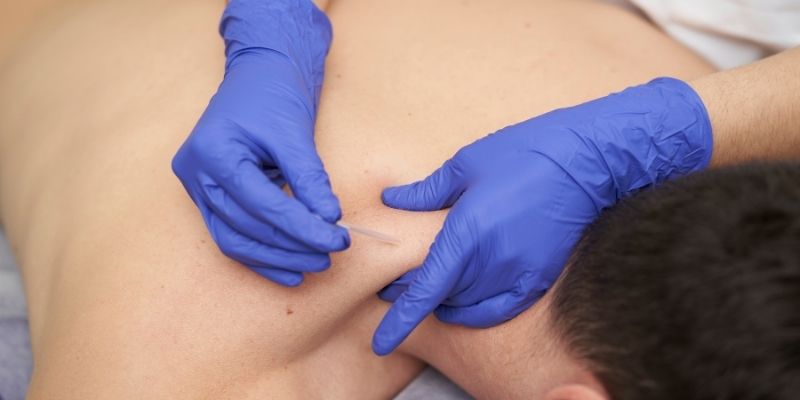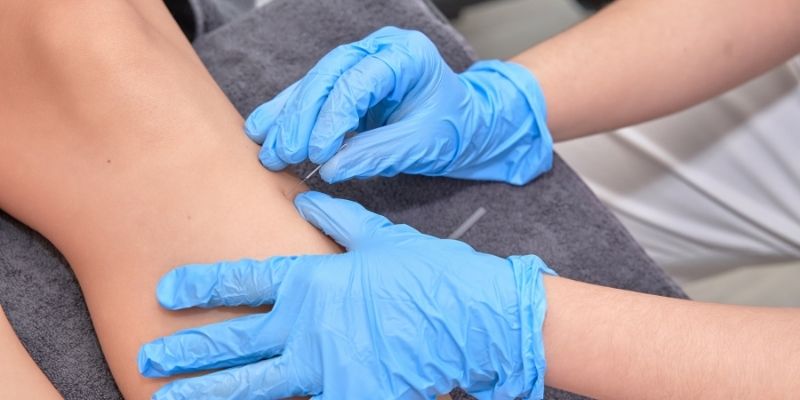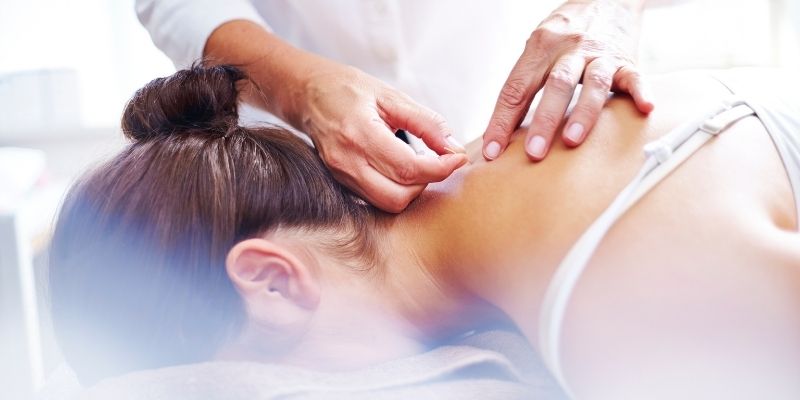Can Dry Needling Offer Relief for Migraine Sufferers?
Advertisement
Migraines are a painful condition that affects millions of people around the world. The severe headaches and other symptoms can make daily life difficult. While traditional treatments like medications and changes to one's lifestyle are often suggested, alternative therapies like **dry needling** have become more popular because they may help lower migraine pain and even stop future episodes from happening. This article will examine how dry needling can help people with chronic migraines, its benefits, and how it works.
What Does Dry Needling Mean?

Dry needling is a therapy that involves putting thin, clean needles into specific trigger points or tight spots in muscles to ease pain and make them more flexible. It is based on modern Western medicine and works on musculoskeletal problems, although it is often compared to acupuncture.
Dry needling helps people who get migraines by targeting trigger points and tense muscles in places like the head, shoulders, and neck. These areas are often connected to headaches. By taking care of these physical issues, dry needling helps control both the severity and frequency of headaches.
How Does Dry Needling Help with Migraines?

Dry needling works when it comes to headaches because it eliminates the causes rather than just covering up the symptoms. It can help people who get migraines in the following ways:
Relieves Muscle Tension
When someone has a migraine, they often feel tense neck, shoulders, and head muscles. Dry needling can loosen these tight muscles, making headaches less painful and less likely to happen.
Makes Blood Flow Better
When needles are put into trigger points, they increase blood flow to the affected areas. Better blood flow helps the body heal and may lower inflammation, which can cause migraines.
Turns off trigger points.
Knots in your muscles are trigger points, which can cause pain or discomfort in other body parts, as well as the head. Dry needling works by removing these knots, which eliminates one of the main causes of migraine pain.
Lowers Strain and Stress
Many people get headaches because of stress. Dry needling can ease muscle tension and make you feel less tense overall, which may help prevent stress-related migraines.
Should You Try Dry Needling?
If any of the following migraine signs apply to you, dry needling may be a good cure:
- Persistent muscle tension in the neck, shoulders, or head.
- Frequent headaches due to stress or muscle strain
- Typical migraine treatments not working very well
- Sensitivity in specific places, such as trigger points in the muscles.
Why Dry Needling Can Help with Migraines?
For people who get migraines often, dry needling has several benefits:
An approach that doesn't involve drugs
Dry needling doesn't depend on drugs like medicines do, which can have side effects or make you dependent on them. This makes it a better choice for managing migraines for a long time.
Quick Relief
Many patients say they feel better right away after their sessions, and some say their headaches get better or last shorter almost immediately after the session.
Treatment that is tailored to your needs
Dry needling can be customized to target areas that cause migraines, allowing a more personalized way to manage pain.
Additional Therapy
Dry needling can also be used with physical therapy, or other treatments to get better results.
How Does Dry Needling Work?
You can feel less anxious if you know what to expect during a session:
1. Evaluations and Plans
First, the therapist will look at your symptoms and try to find trigger points that might be making your headaches worse.
2. Putting in the needle
Tiny needles are put into the trigger points that have been found. You might feel a pinch or cramp in your muscle, but it's usually very weak and only lasts for a short time.
3. Release of Muscles
As the tightness in the muscles goes away, many patients feel relief or relaxation right away.
4. Care after the session
Some people may feel mild pain or bruises after the session, but these effects usually go away in one or two days.
Are There Any Risks or Harmful Effects of Dry Needling?
Dry needling is usually safe when done by a trained expert. Some people may, however, suffer minor side effects, such as:
- Soreness or bruises briefly at the insertion places.
- Feeling tired after a session.
- Feeling dizzy or faint.
Talking to a qualified professional ahead of time is important to ensure that the treatment is appropriate for your situation and medical history.
What Does the Research Say About Using Dry Needling to Treat Migraines?
Although more research needs to be done on dry needling for headaches, early studies show that it may help:
- A study found that dry needling can help people who get migraines frequently by reducing the frequency and severity of their headaches.
- Dry needling has been shown to help people get better generally when combined with other treatments, like physiotherapy.
Adding Dry Needling to Your Plan to Deal with Migraines
The best way to use dry needling to treat migraines is as part of a larger plan to control them. You might want to combine it with the following methods:
Taking care of your stress
To deal with stress-related migraine triggers, try relaxation methods like yoga, meditation, or therapy.
Physical therapy
Targeted movements can help improve posture, ease tension leading to migraines, and keep muscles from straining.
Making changes to your diet
Find foods that worsen headaches, like caffeine or processed foods, and stay away from them.
Medications or supplements
Talk to your doctor about other treatments that could help your plan for managing migraines.
When To Get Medical Assistance?
Traditional treatments for headaches may need more help if they are getting in the way of your life. You should talk to your doctor about dry needling. Seek professional help so they can suggest a treatment plan tailored to your needs.
Final Thoughts
Dry needling may be a good option for people who want to get rid of their chronic migraines. This method treats pain completely by reducing muscle strain, increasing blood flow, and focusing on trigger points. Additionally, dry needling can help lower the number and intensity of migraines when used with other treatments.
Researchers are still learning more about the benefits of dry needling, which could make it a more popular way to treat headaches. Talk to a trained professional to ensure the treatment is safe and proper. Migraines can complicate life, but you can get a better quality of life with the right care and techniques.
On this page
What Does Dry Needling Mean? How Does Dry Needling Help with Migraines? Relieves Muscle Tension Makes Blood Flow Better Turns off trigger points. Lowers Strain and Stress Should You Try Dry Needling? Why Dry Needling Can Help with Migraines? An approach that doesn't involve drugs Quick Relief Treatment that is tailored to your needs Additional Therapy How Does Dry Needling Work? Are There Any Risks or Harmful Effects of Dry Needling? What Does the Research Say About Using Dry Needling to Treat Migraines? Adding Dry Needling to Your Plan to Deal with Migraines Taking care of your stress Physical therapy Making changes to your diet Medications or supplements When To Get Medical Assistance? Final ThoughtsAdvertisement












